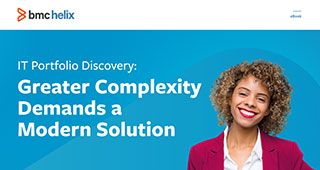Most organizations are actively embracing cloud strategies. The promise of easily accessible and consumable cloud services helps drive business transformation and time to market, which makes the shift to cloud an attractive proposition. According to the B2B research firm MarketsandMarkets™, the global cloud computing market size is expected to grow from $371.4 billion in 2020 to $832.1 billion by 2025, at a Compound Annual Growth Rate (CAGR) of 17.5 percent.
Benefits include:
- Cost reduction
- Increased agility and flexibility
- A plethora of pre-built cloud services for application developers to leverage
- Dynamic scalability of applications
- Improved performance and uptime
- Faster time to market
- Baked-in security
- Better customer experiences
So, how do you get started?
The cloud migration process requires careful analysis, planning, and execution to ensure that the cloud solution will meet the needs of the organization and its customers.
First, you need to define a clear set of business goals. These could include lowering the total cost of ownership (TCO), reducing resource waste or expanding revenue opportunities. Once you have defined your objectives, you will be able to identify which applications are potentially good candidates to be moved, and which cloud platform is best for your business. Your plan should also include a clear set of measures for success to help ensure increased business value and a positive return on investment.
Once your migration plan has been established, you need to establish a baseline of your current environment to determine how the move will impact your targeted applications and services. BMC Helix Discovery is the ideal place to start, because you can quickly perform application discovery and dependency modeling on your current on-premises infrastructure.
The solution’s software-as-a-service (SaaS)-based, agentless implementation makes discovery and dependency modeling easy, whether you are searching for applications on your current infrastructure or across cloud-native environments. Within minutes, you can obtain an accurate inventory of your hardware, software, and service dependencies so you can decide whether you need to re-host, re-platform, or re-factor your applications and services. By performing an accurate assessment of your current infrastructure with BMC Helix Discovery, you get a baseline upon which your cloud migration project can begin.
What about cost?
To realize the true benefits of cloud migration, you should understand the resource needs of the applications that are being moved. For instance, items earmarked for a lift-and-shift migration will have different needs than those that need to be re-factored or updated. Understanding the resource requirements for each application beforehand will put you in the best position to meet demand and minimize costs.
BMC Helix Discovery and BMC Helix Continuous Optimization give IT organizations the ability to see the entire infrastructure and its allocation and resource requirements. During the discovery and dependency modeling process, BMC Helix Discovery generates Dynamic Service Models, which are utilized by BMC Helix Continuous Optimization to accurately analyze and predict utilization as business-critical applications are moved to the cloud.
Performing cost optimization before migration has the added benefit of helping IT organizations determine which platform is the best fit for their business. For instance, an IO-bound application might cost less with one public cloud provider than another. BMC Helix Continuous Optimization provides teams with the intelligence they need to make informed decisions that align with their technical needs and benefit their bottom line.
Life after migration
Completing your migration isn’t the end of the story. Once your applications are up and running, there will always be the need to continually discover, monitor, and optimize your applications to improve performance and manage costs, while also delivering exemplary customer service.
The comprehensive BMC Helix suite can help you see how well your applications are performing in the cloud. By producing centralized, continually updated Dynamic Service Models, BMC Helix Discovery keeps your teams informed about their latest application configurations and dependencies at all times.
Following this centralized approach, the artificial intelligence (AI)-driven BMC Operations Management with AIOps solution uses service-centric monitoring, advanced event management, probable cause analysis, and intelligent automation to help teams manage and monitor the complexity and scale of IT operations while preventing problems with proactive management and reduced MTTR when issues arise.
Organizations need to continually optimize resource usage and minimize costs while they support fluctuations in business service demand. BMC Helix Continuous Optimization provides ongoing visibility into cloud-based infrastructure so IT teams can easily add, remove, or adjust resources to assure services and meet changing application demands.
Conclusion
Companies have been migrating to the cloud at an unprecedented pace. For migration to be a success, IT organizations must define their business goals and criteria for success and understand which applications and services should be moved, modified, or re-written, as well as how to optimize their resource usage across cloud, hybrid, and on-premises environments. BMC Helix Discovery, BMC Helix Operations Management with AIOps, and BMC Helix Continuous Optimization address these issues with complete visibility, monitoring, and continuous resource optimization capabilities for today’s complex IT infrastructures.
Visit the BMC Helix, BMC Helix Discovery, BMC Operations Management with AIOps, and BMC Helix Continuous Optimization web pages to learn more.







